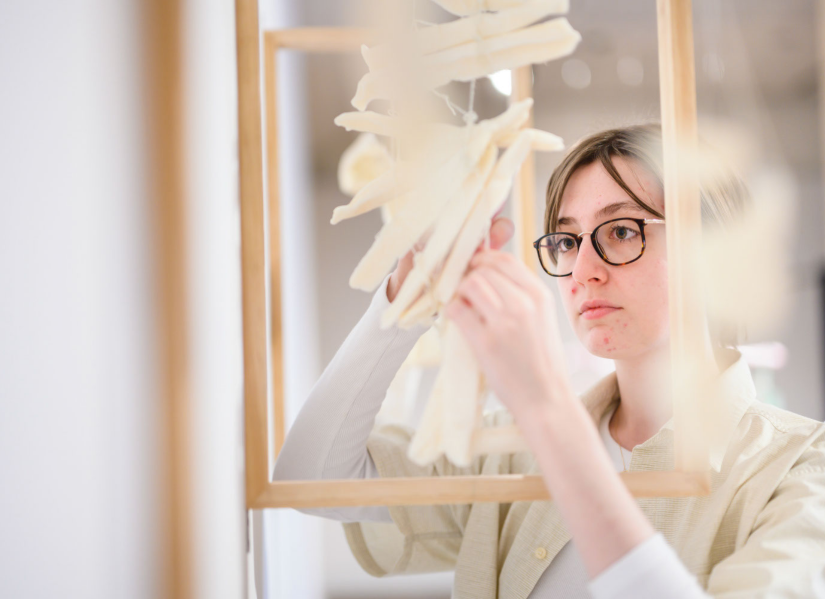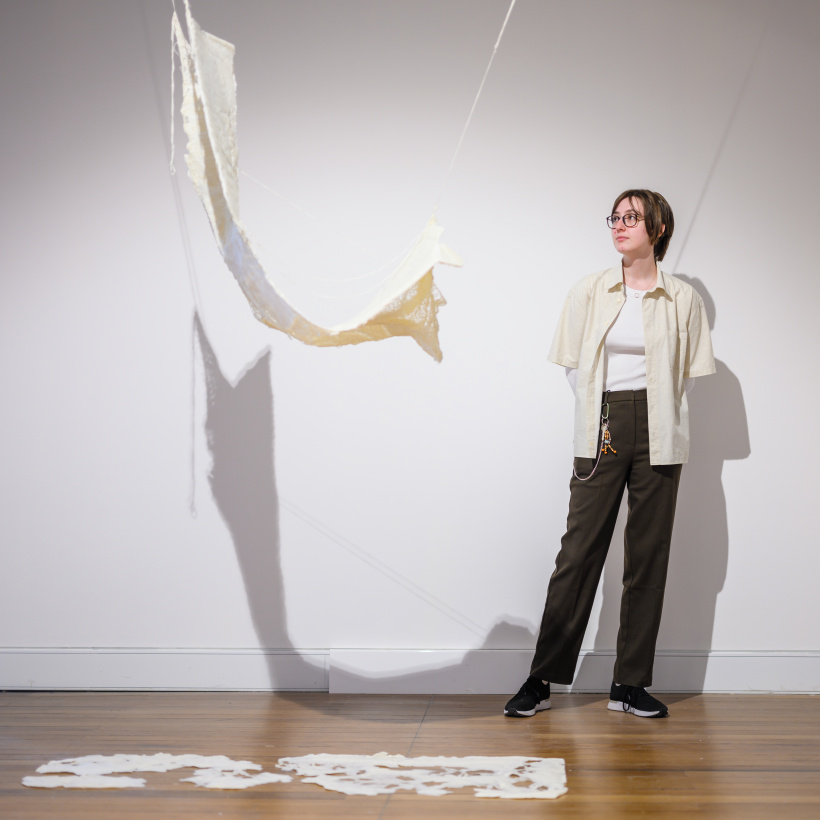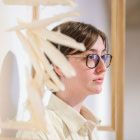
I'm Soph Gibson, an undergraduate student at QUT studying a Bachelor of Fine Arts (Visual Art) and the creator of Falling Fate, Sliced and Two Hundred and Six in Captured i-iii. At the beginning of my university journey, I decided to pursue visual arts because at the time the only thing motivating me was creating and discussing art. I also felt visual arts gave me an outlet to show my most authentic mode of expression.
As I researched art degrees, I found that QUT's open studio program placed a higher priority on collaborative and transdisciplinary work than streamlining majors by the medium. My interests were drawn to this since I had experimented with multiple media and had not yet found the nuance of my passions. Seeing the previous graduate exhibitions prior to applying inspired me, and evidenced that QUT’s arts program focused on visual art. In addition to being selective, I knew from the beginning that the teaching staff were committed to making sure students fit their degrees and degrees fit students.

I was fortunate enough to have the opportunity to display my work at the Visual Arts Graudate Exhibition: Array 2022. My body of work is three sculptures made of soy wax, cotton thread, plywood and baking paper. These sculptures act as surrogate bodies for my somatic experiences as a genderqueer person with chronic illness. The works were the culmination of my investigative practice over the three years of my open studio program. Falling Fate was knitted to a length that covers the artist’s body to the chin as if a protective custom blanket. However, its body-like density and position as it is strung in an almost torturous arch in the middle of the space do little to obscure it and instead become a seductive display of vulnerability and hopelessness.
Sliced has a figurative connection to spinal vertebrae but also enticing delicacies, and this contrast of sensations provides a tension equal to that of a backache that never recedes. Two Hundred and Six in Captured i-iii displays both complex entanglement and visceral tension, whilst being calmly enclosed within palatable frames. Together, the works are visually harmonious but explore uniquely nuanced corporeal tensions, resulting in a body of work that exists in a tension of its own; between unity and conflicting complexities.
Prior to the degree, I was very much interested in visual arts, but did not have any concrete understanding of the nuances and evolution of contemporary art and the theory that supports it. The rich and diverse explorations of local and international art in our four contemporary art history subjects both equipped me with knowledge of the way in which visual art has shifted and developed over time and exposed me to many artists who now inspire and influence my practice. The history subjects throughout the degree, become interwoven with your practice and support your work across your other subjects. My lecturers for these subjects have all been highly engaging, as they do not just recite history but instead discuss the conceptual and contextual relevance of the works then and now.
This degree ultimately develops the way in which you work and practice as an artist. Therefore, not only am I equipped with industry-specific knowledge and skills, but I have a deeper understanding of myself as an artist and arts worker. I have already used and will continue to draw upon the experiences from university in both my artwork and as an artist.
